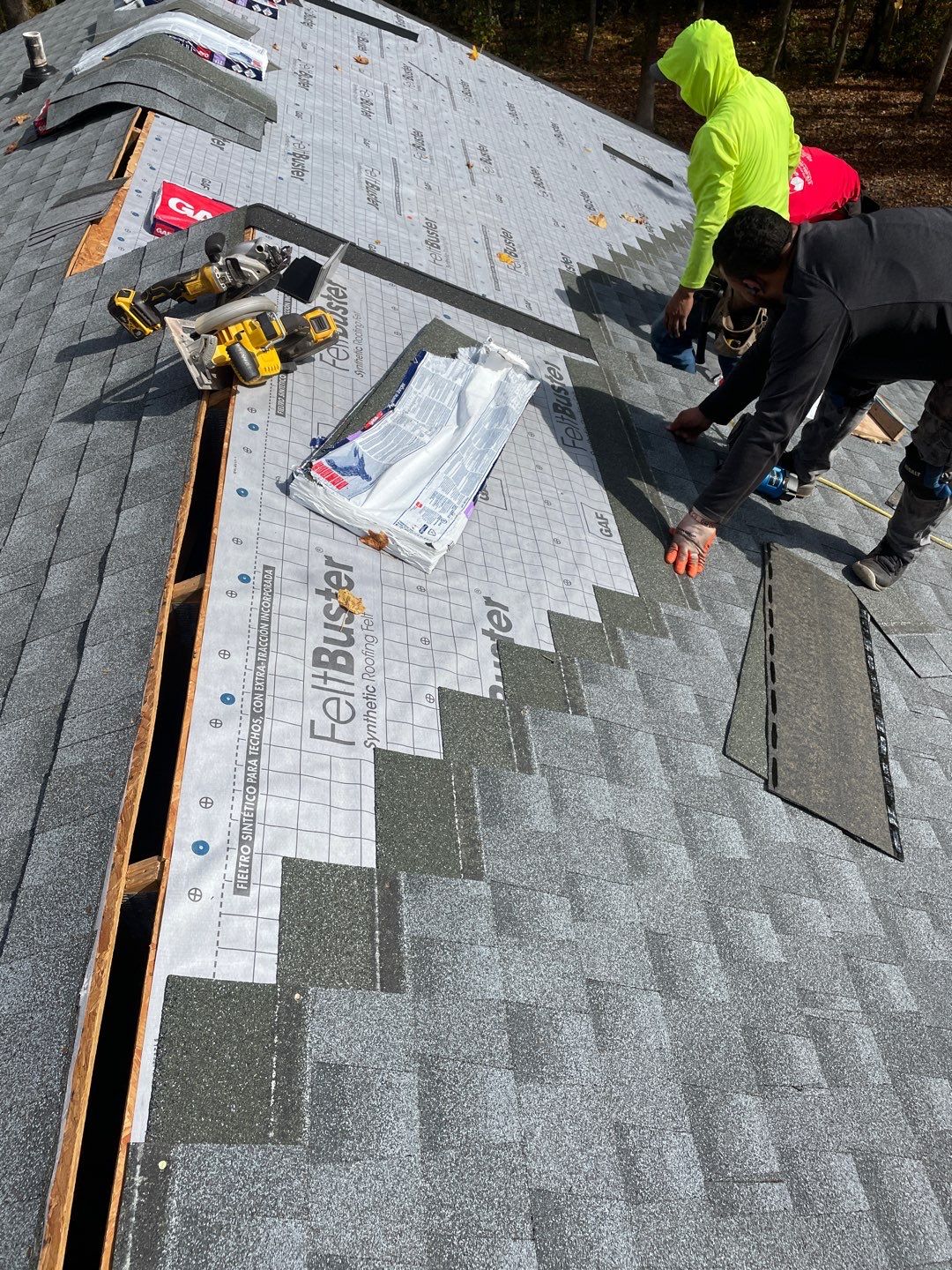How Gainesville Roofing Companies Can Transform Your Home's Exterior
How Gainesville Roofing Companies Can Transform Your Home's Exterior
Blog Article
Ideal Practices for Ensuring Proper Roof Air Flow
A well balanced consumption and exhaust air vent proportion, generally 1:300, plays an essential role, with consumption vents preferably placed at the lower side of the roofing for amazing air entrance and exhaust vents at the optimal for warm air exit. Maintaining insulation away from vents is vital to avoid air flow constraint.
Understand Ventilation Fundamentals
Effectively recognizing air flow fundamentals is crucial for making certain the longevity and efficiency of roof. Effective air flow minimizes moisture accumulation and temperature level extremes in the attic, both of which can lead to significant architectural damages gradually. A well-ventilated roofing helps in stopping typical problems such as mold and mildew development, wood rot, and ice dams, which can endanger the integrity of the roof materials and the underlying frameworks.
The key objective of ventilation is to assist in the motion of air, permitting a regular exchange between the interior and exterior settings. This equilibrium is achieved via a mix of intake and exhaust vents that work together to keep ideal air flow. Intake vents, typically situated along the eaves or soffits, enable fresh air to get in the attic room space, while exhaust vents, typically located at or near the roofing system ridge, allow warm, humid air to escape.
Secret factors influencing the performance of roofing ventilation consist of appropriate positioning, adequate sizing, and ensuring that both intake and exhaust vents are unhampered. Routine evaluation and maintenance are essential to recognize potential blockages, damage, or ineffectiveness in the air flow system, thus safeguarding the roof covering's performance and longevity.
Sorts Of Roof Covering Vents
Roof vents play a crucial function in preserving reliable attic room ventilation and, by expansion, the general health and wellness of the roof covering system. Numerous sorts of roof vents are readily available, each with unique advantages tailored to certain roofing demands. Ridge vents, for instance, are installed along the roofing's top, allowing cozy, moist air to escape from the attic. They offer constant air flow and mix flawlessly with the roofline, making them both efficient and aesthetically pleasing.

Soffit vents are mounted under the eaves and operate in tandem with roof vents to make sure a balanced consumption and exhaust system. By enabling cooler air to get in from below, soffit vents assist in the expulsion of warm air through top vents. Gable vents, situated on the exterior walls of the attic, offer one more efficient service, specifically in homes with gable roofing systems.
Analyze Your Current Air Flow

Next, consider the age and condition of your roof covering products and ventilation elements. Older systems may not comply with current building ordinance or may have degraded over time, minimizing their performance. Conduct a complete exam to determine any type of signs of deterioration, such as corrosion, damages, or gaps that can compromise the system's efficiency.
In addition, determine the attic temperature level and moisture degrees. High temperatures and moisture can indicate insufficient air flow.
Installment Best Practices
Reliable setup of roof covering air flow systems is critical for guaranteeing optimum efficiency and durability. Proper installation starts with comprehending the specific ventilation needs of the building and the roof it covers. This includes calculating the appropriate ratio of intake to exhaust vents, normally sticking to the 1:300 policy, which states one square foot of ventilation for every single 300 square feet of attic room flooring space.

The positioning of vents is equally vital. Consumption vents should be set up at the roofing system's reduced edge, typically in the soffits, to permit amazing air to get in. Exhaust vents, on the various other hand, must be mounted near or at the roofing system's top to help with the exit of warm, damp air. This creates a natural air flow that assists maintain temperature and wetness balance within the attic room.
Seal all air vent connections meticulously to avoid air leakages and possible water infiltration. Use premium products and follow producer standards to guarantee longevity and effectiveness. Furthermore, incorporating ridge vents with baffles can dramatically enhance airflow effectiveness by stopping wind-driven rainfall and snow from getting in the attic room.
Inevitably, accurate setup of roof ventilation systems reduces potential issues such as mold development, ice dams, and architectural damage, guaranteeing the roofing system's honesty and the building's overall health and wellness.
Routine Upkeep Tips
Consistency in maintenance practices is fundamental to guaranteeing the long-lasting effectiveness of roof air flow systems. Regular inspections are essential, ideally done biannually-- in the springtime and fall. During these assessments, ensure that vents are devoid of debris, nests, and other obstructions that could hamper air flow. Check for any indications of wetness accumulation or mold and mildew, as these can indicate incorrect ventilation or leakages (roofing companies).
Cleansing the vents is another crucial task. Make use of a soft brush or a vacuum cleaner to eliminate dust and particles from consumption and exhaust vents. Beware not to harm the vent displays or louvers during the procedure. In addition, examine the attic room space for any kind of indicators of water damage, which might endanger the integrity of the roofing system.
Correct insulation is similarly important. Make sure that attic room insulation does not obstruct the vents, as this can drastically check this restrict air flow. Reposition or replace it to preserve a reliable obstacle. if any insulation has moved or resolved.
Lastly, replace any type of harmed or missing out on components immediately. Busted vents, fractured roof shingles, or scrubby flashing can all contribute to inadequate ventilation and must be attended to immediately. Normal upkeep makes sure that the roofing ventilation system works efficiently, consequently prolonging the life expectancy of the roofing itself.
Conclusion
Guaranteeing correct roof ventilation is extremely important for preserving the performance and durability of a roofing system. Adherence to the 1:300 consumption and exhaust air official statement vent ratio, paired with the tactical positioning of vents, is important.
A well balanced intake and exhaust vent ratio, frequently 1:300, plays a pivotal function, with intake browse around this web-site vents preferably placed at the reduced side of the roof for amazing air access and exhaust vents at the peak for warm air leave. Consumption vents, generally situated along the eaves or soffits, enable fresh air to enter the attic room room, while exhaust vents, frequently located at or near the roofing system ridge, make it possible for warm, humid air to run away.
Soffit vents are set up under the eaves and job in tandem with roof vents to guarantee a well balanced consumption and exhaust system. By permitting cooler air to get in from below, soffit vents facilitate the expulsion of hot air with top vents. Adherence to the 1:300 consumption and exhaust air vent proportion, coupled with the calculated positioning of vents, is essential.
Report this page